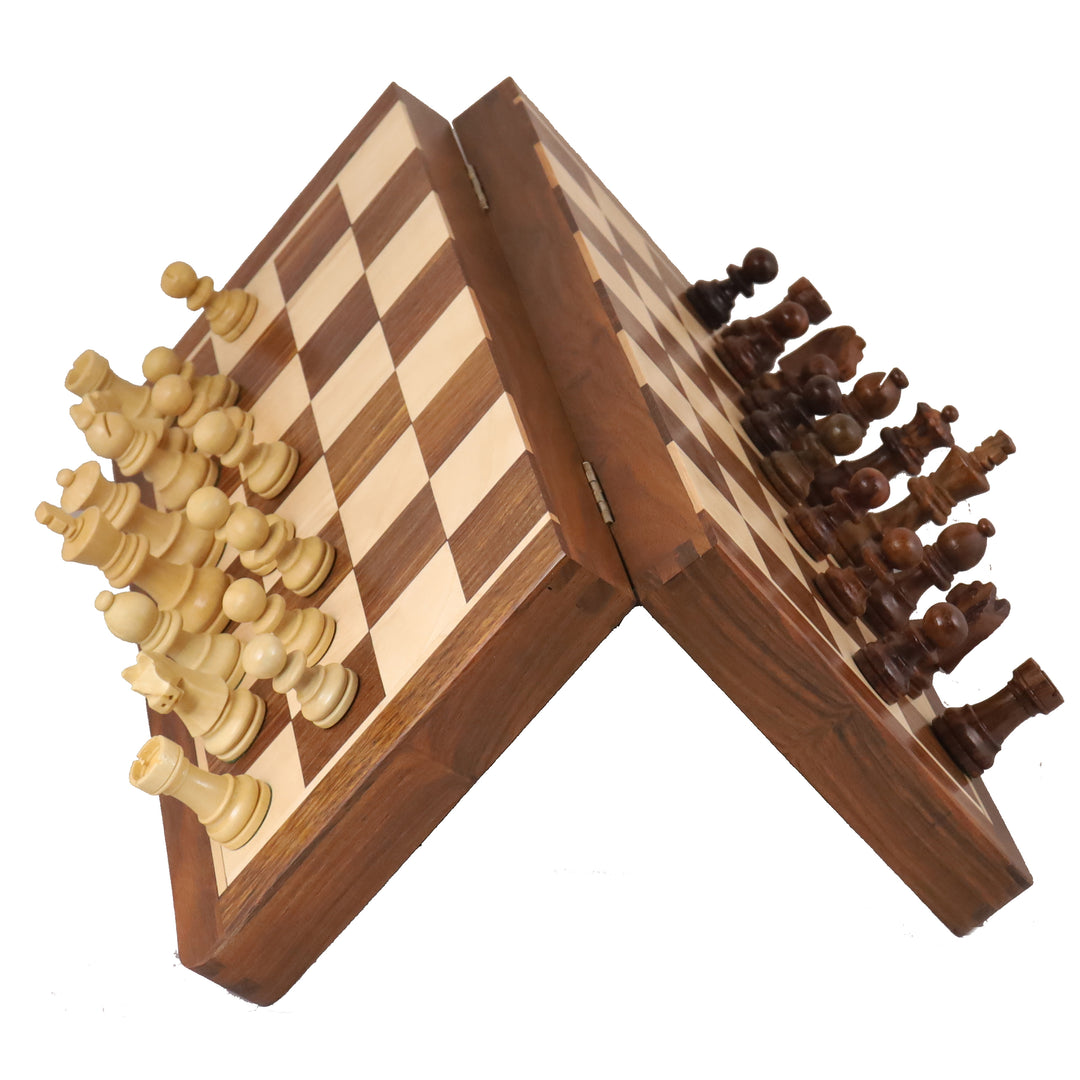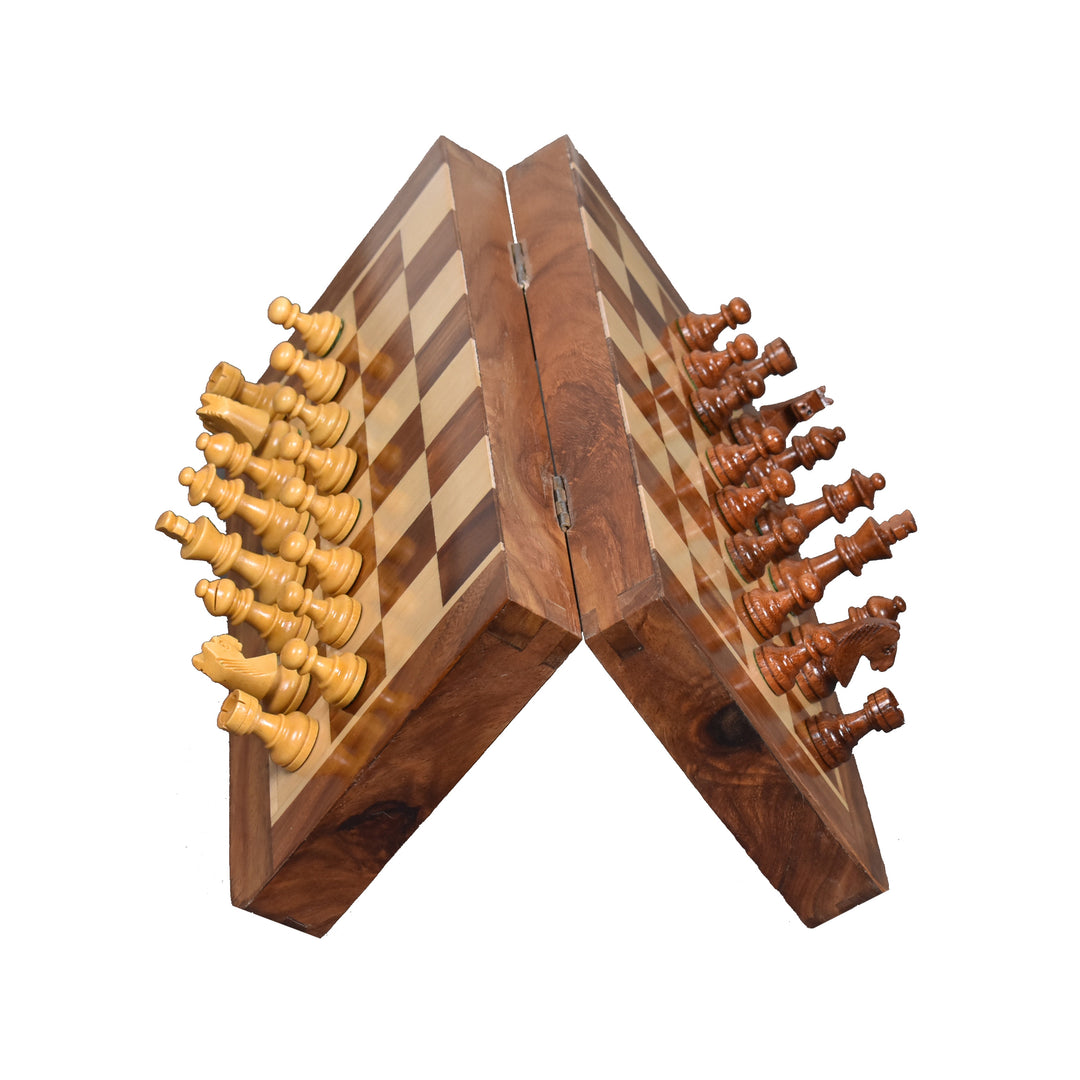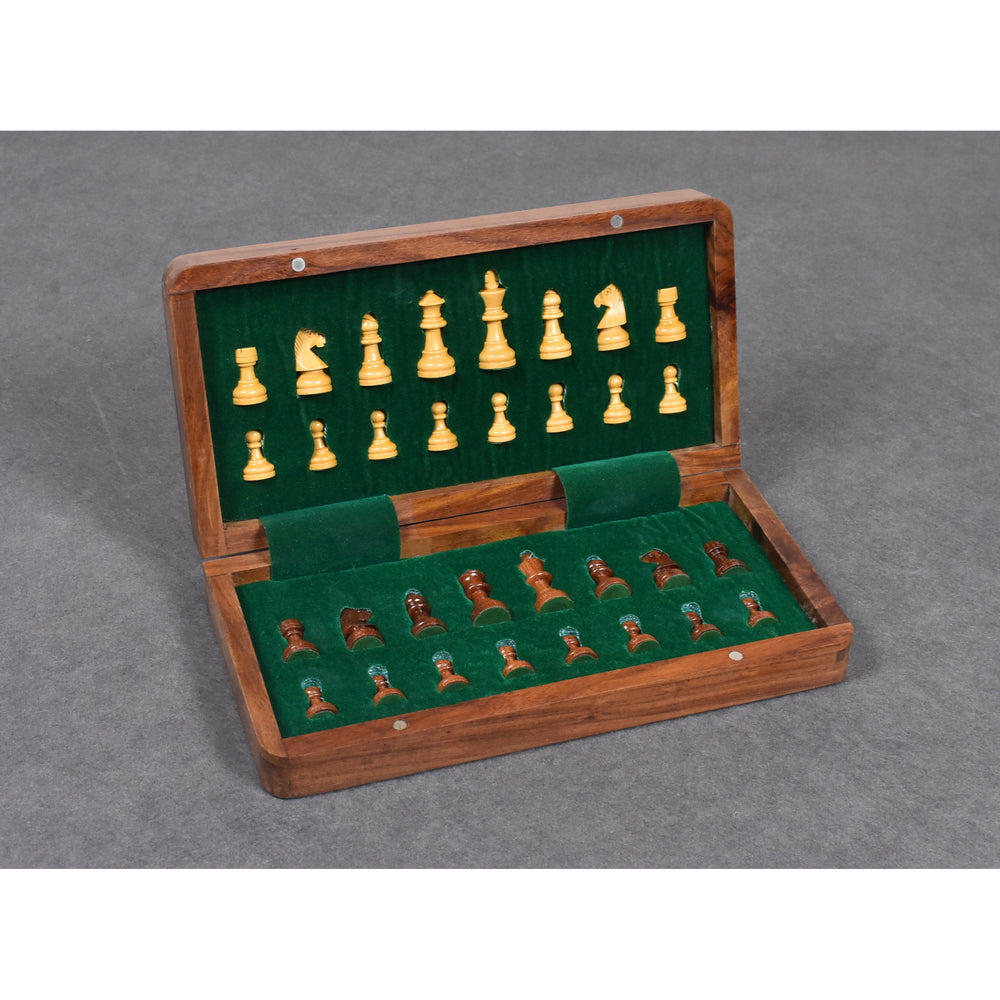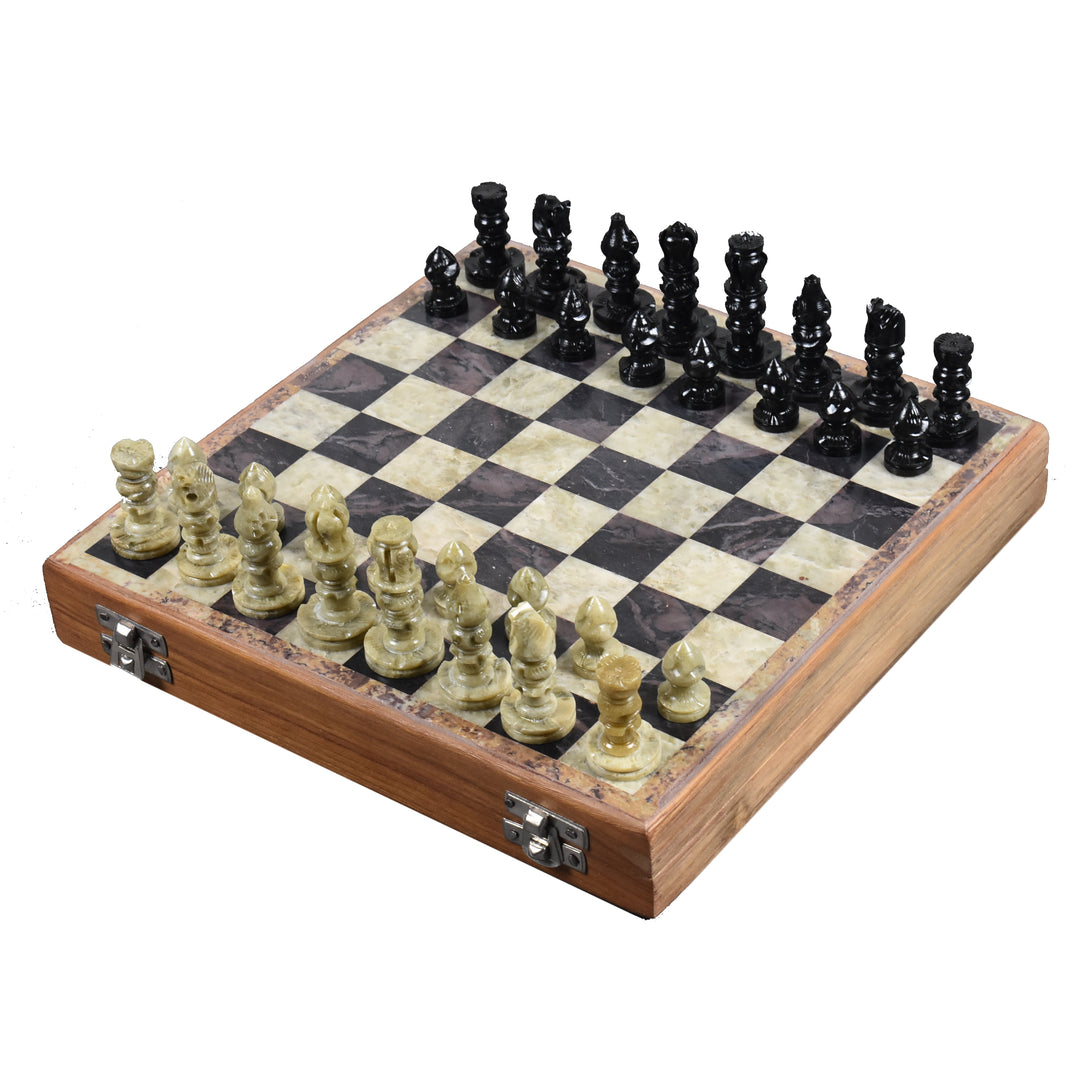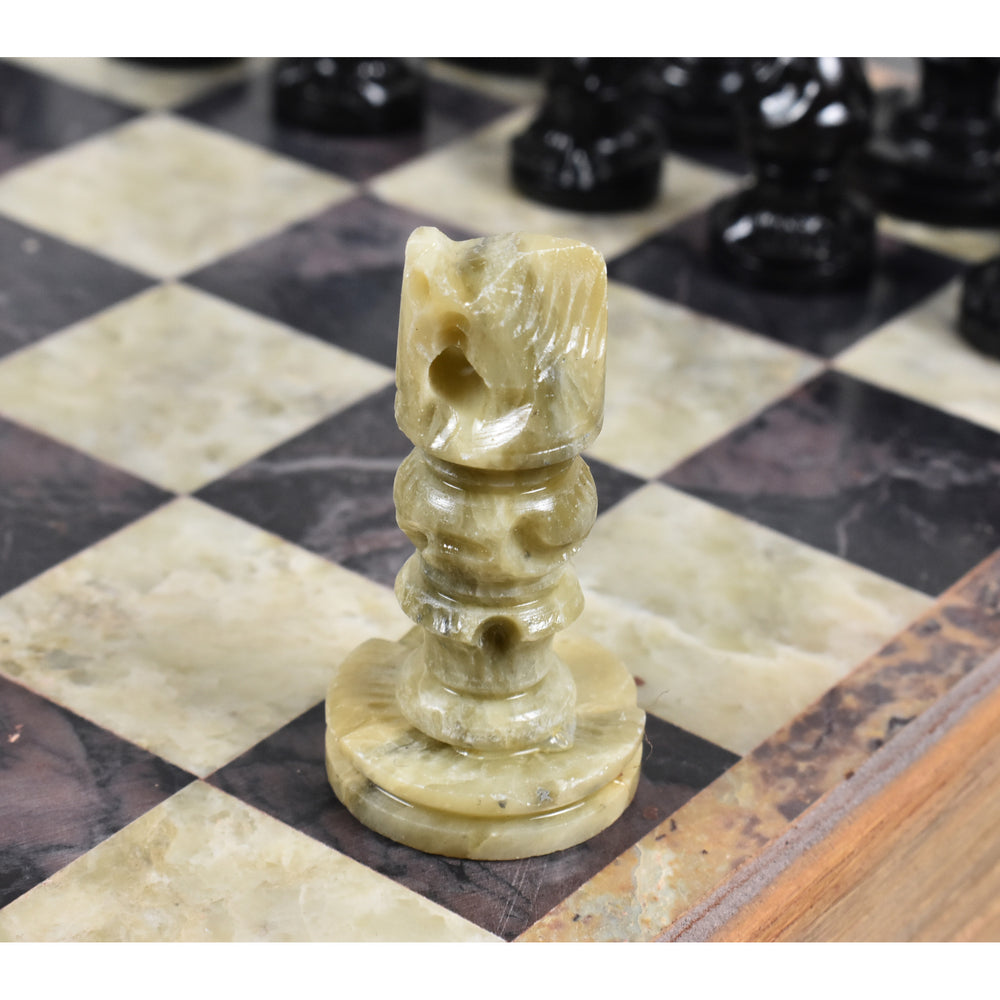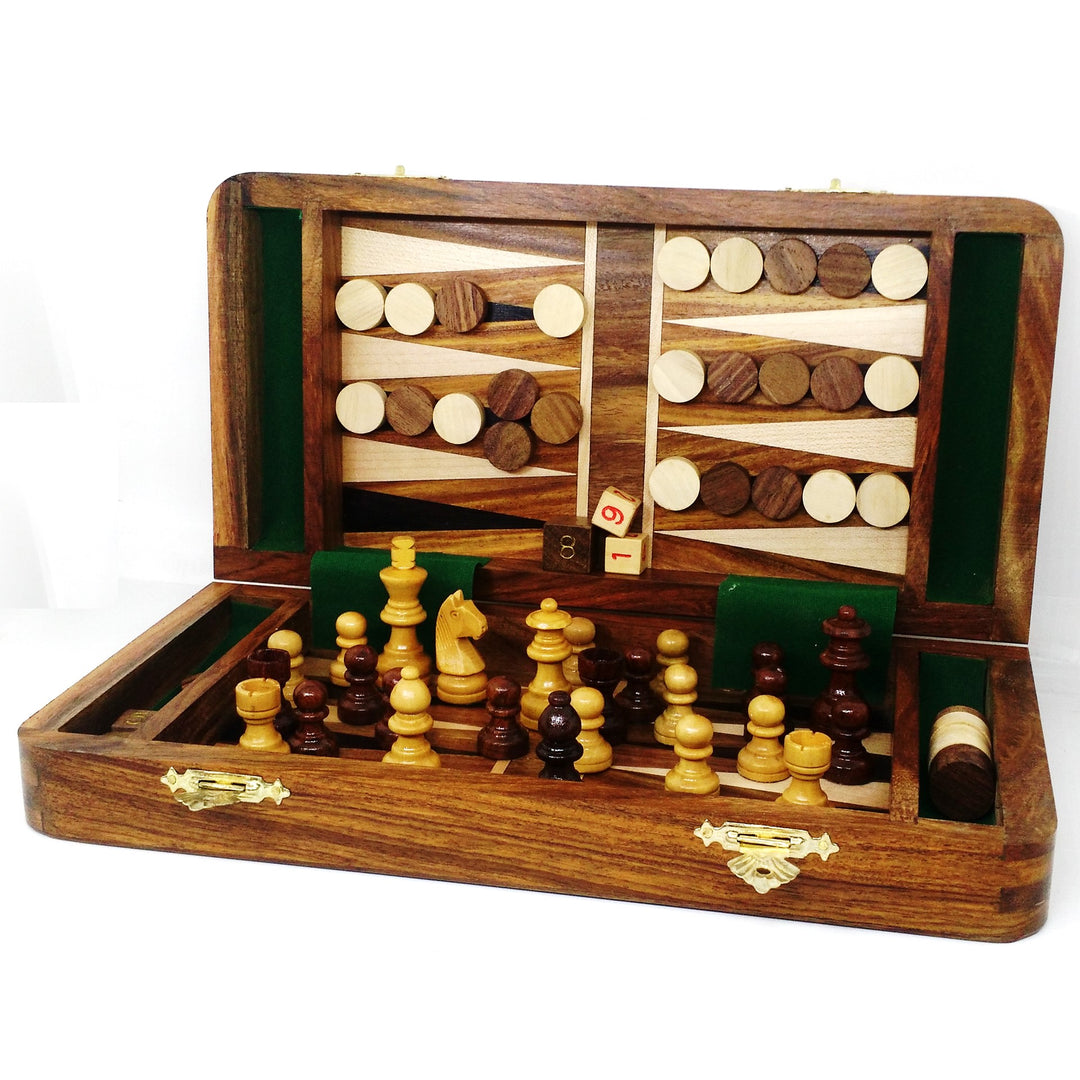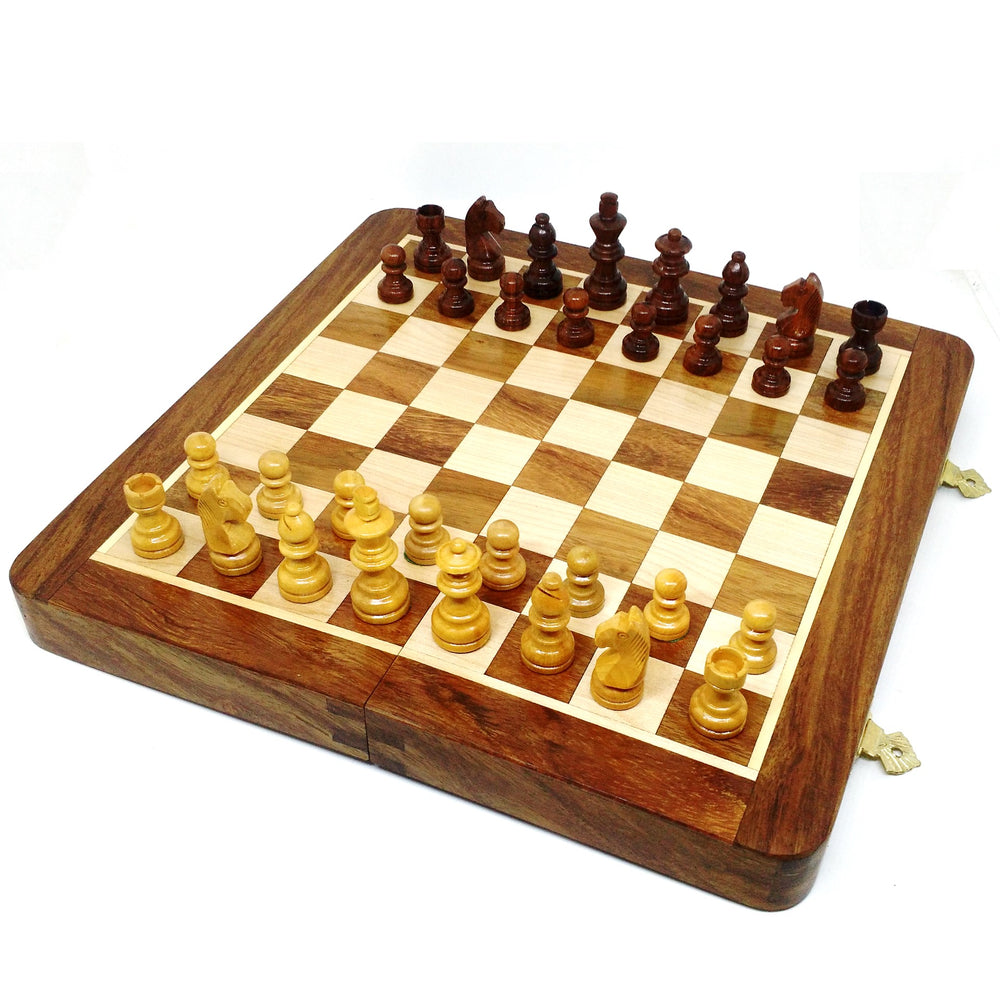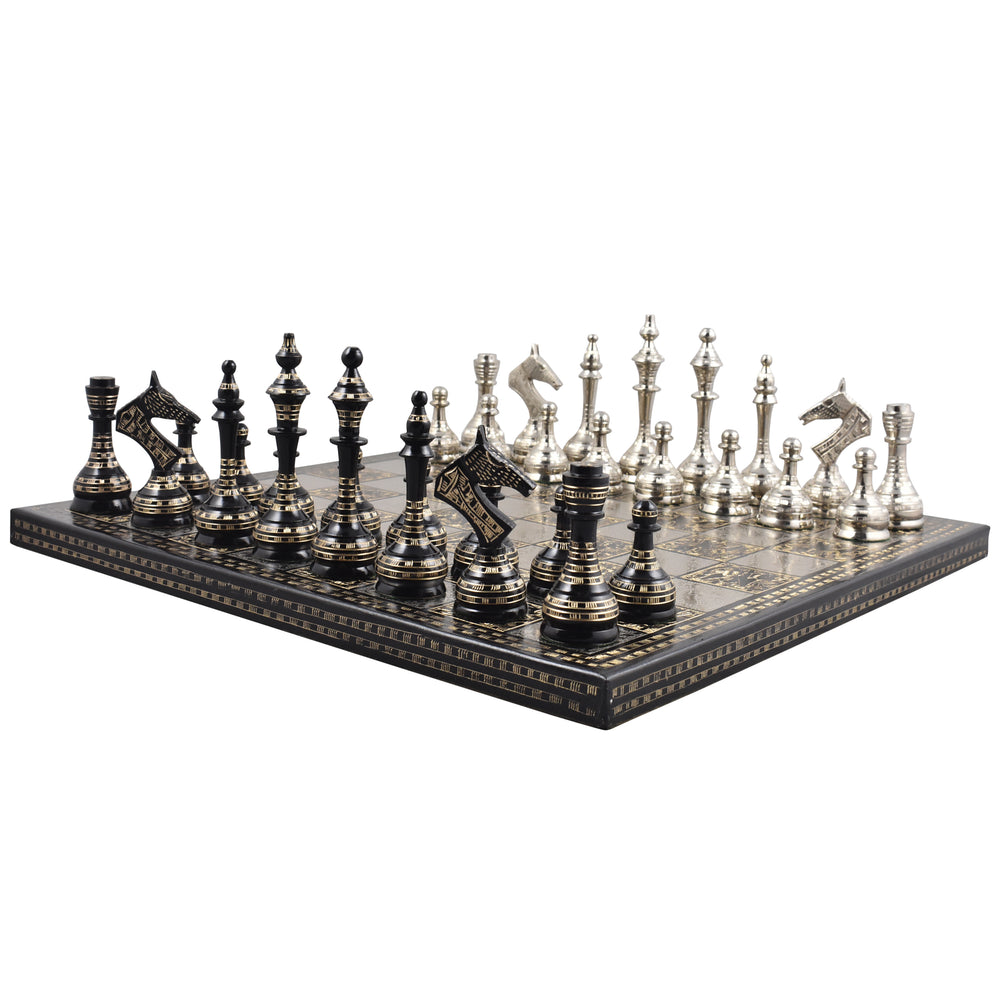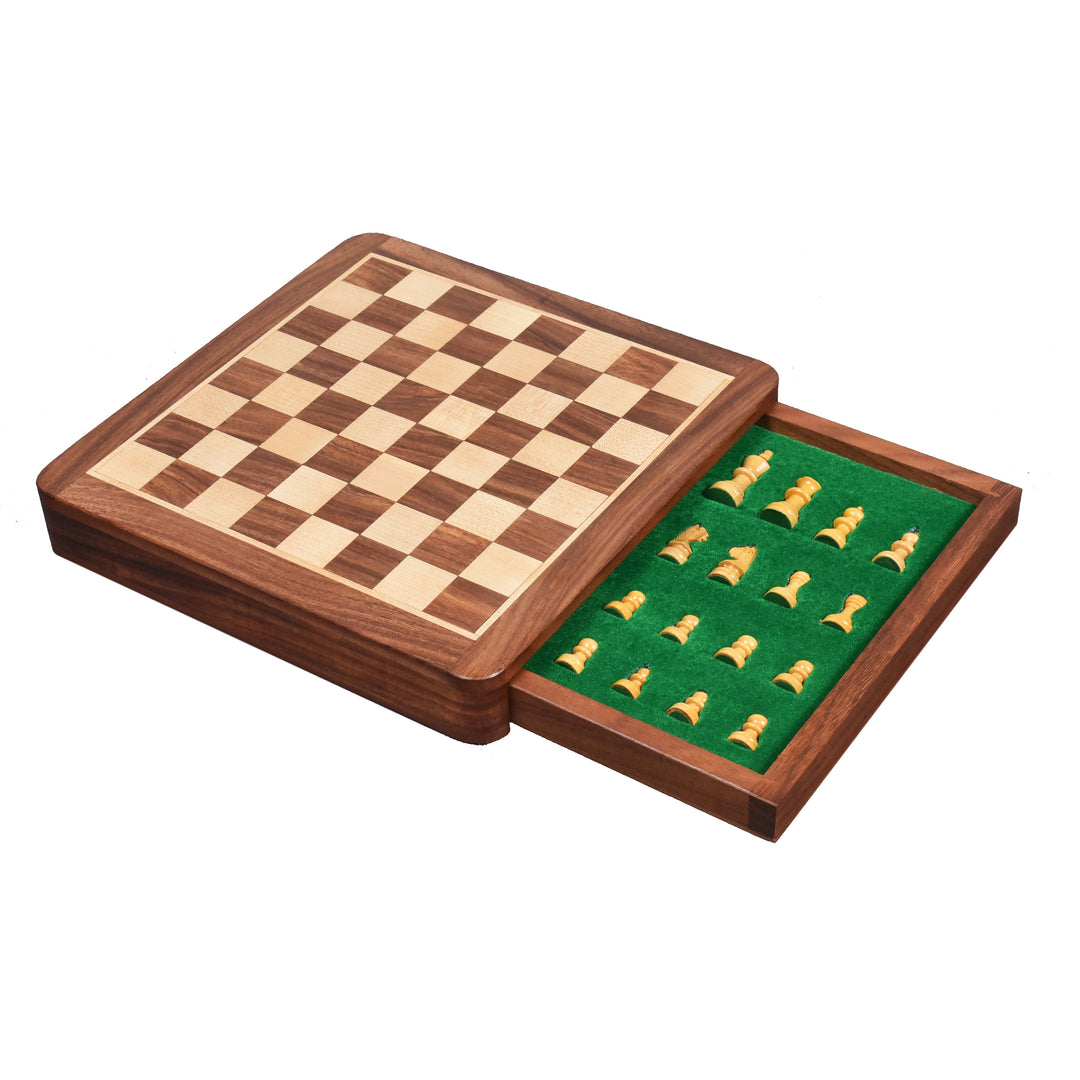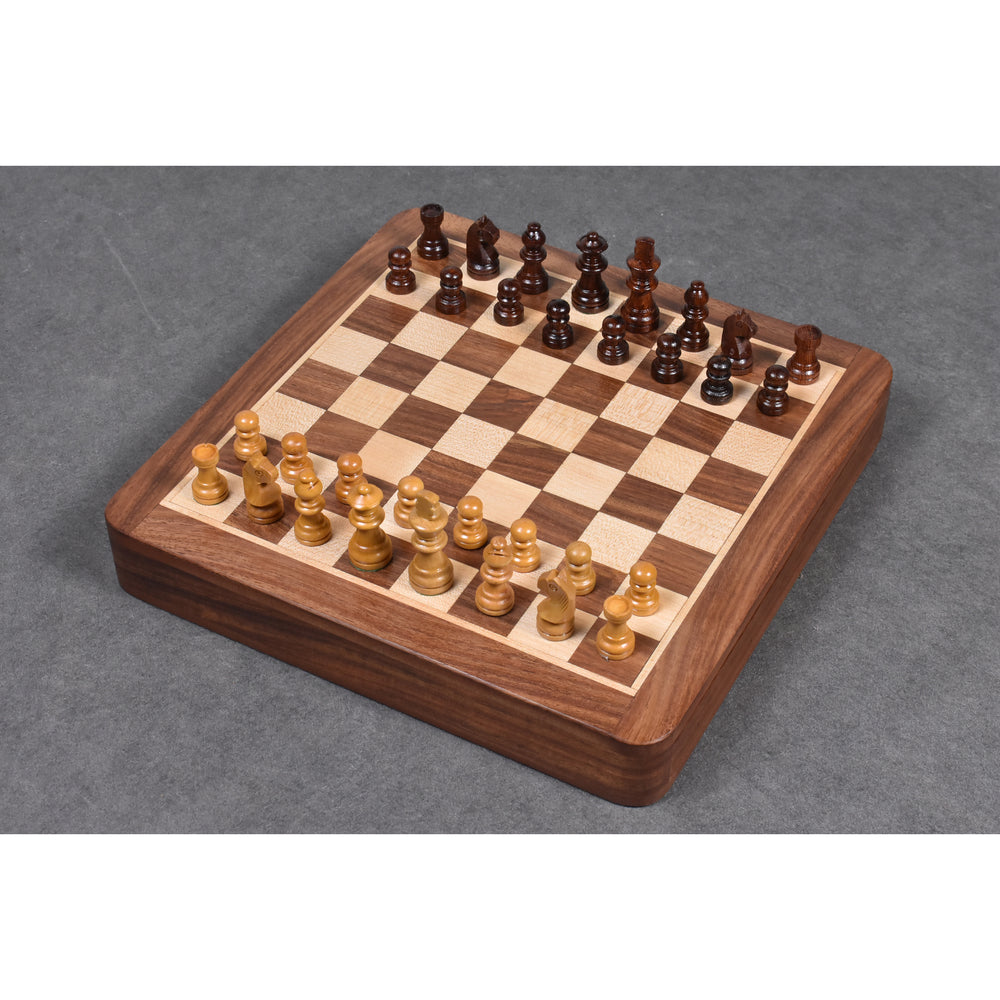Chess, a game of strategy and intellect, relies heavily on the right equipment, and one crucial aspect is the size of the chess set you choose. Whether you're a casual player or an aspiring grandmaster, understanding the dimensions of your chess board and pieces is essential for a comfortable and competitive game. In this comprehensive guide, we will explore what size constitutes a standard chess board, delve into the specific dimensions required for tournament play according to USCF and FIDE rules, and provide valuable insights into optimizing your chess board setup.
What Size is a Standard Chess Board?
A standard chess board is the foundation of every game. Its dimensions determine the space available for your pieces to maneuver, making it a critical factor in your chess experience. The typical size of a standard chess board is 20 inches by 20 inches (50.8 cm by 50.8 cm). This size accommodates the standard chess piece dimensions comfortably and provides ample space for strategic gameplay. A standard chess board is suitable for casual play, home use, and friendly matches with friends and family.
Key Points:
- Standard chess boards measure 20 inches by 20 inches (50.8 cm by 50.8 cm).
- This size offers ample space for standard-sized chess pieces.
- Ideal for casual play, home use, and friendly matches.
Check Now: The Ultimate Guide to Mastering the Official Rules of Chess
What Size is a Tournament Chess Board? (USCF & FIDE Rules)
For serious chess enthusiasts and tournament players, adhering to specific size standards is imperative. Both the United States Chess Federation (USCF) and the International Chess Federation (FIDE) have established guidelines for tournament-sized chess boards.
USCF Regulations
- A tournament chess board for USCF-sanctioned events must have squares measuring 2.25 inches (5.7 cm) on each side.
- The overall size of the USCF-compliant board typically ranges from 20 inches to 22 inches (50.8 cm to 55.9 cm).
FIDE Regulations
- FIDE-approved boards must have squares measuring 2.375 inches (6.0 cm) on each side.
- The overall size of FIDE-compliant boards typically ranges from 21.25 inches to 23.625 inches (54 cm to 60 cm).
Adhering to these regulations ensures that tournament play remains fair and consistent, as players are accustomed to the specific chess board size and piece dimensions mandated by these organizations.
Key Points:
- USCF-regulated boards have 2.25-inch (5.7 cm) squares, while FIDE-regulated boards have 2.375-inch (6.0 cm) squares.
- Tournament boards typically range from 20 inches to 23.625 inches (50.8 cm to 60 cm).
- Compliance with these regulations ensures fair and consistent tournament play.
Choose The Size of Chessmen That You Prefer
Start with the size of the chess pieces. For the sake of comparisons, measurements are standardized to the dimensions of the tallest chessmen in each set – the Kings. Generally, for significant tournaments the height of the King varies between 3.35 inches or 8.51 cm to 4.5 inches or 11.43 cm.
The standard size of King pieces used at major Fide and USCF tournaments is 3.75 inches or 9.53 cm. For minor tournaments, practice or casual play, the height of the Kings may be from 2.5 inches or 6.35 cm upwards.
To ensure sufficient stability, the diameter of the base of each piece should be between 40-50% of its height. Hence a 3.75-inch-tall or 9.53-cm-tall King, should have a base diameter of between 1.5 inches or 3.81 cm and 1.88 inches or 4.76 cm.

Major tournaments also usually feature double-weighted or even triple-weighted pieces – with added heft and stability to suit the gravity of the occasion. However, relatively lightweight pieces are used for rapid chess (tournaments and tie-breakers in standard tournaments), in order to make them wieldier, though even these are sufficiently weighted, to maintain desired levels of stability.
Of course, chessmen are available outside of 2.5-4.5 inches or 6.36-11.43 cm size range with matching board sizes. There are travel chess sets or novelty miniature Chess sets where the pieces can be just 1.5 inches or 3.81 cm or even smaller.
Some of these sets have magnetic pieces that stick to the specially fabricated chess boards containing iron sheets under the playing surface, to compensate for the lack of heft and stability possessed by these much smaller pieces. At the other end of the spectrum, are much larger chess sets, often beautifully crafted, that serve as show-pieces at homes and public galleries. And then there are giant chess sets, even life-sized ones with matching vinyl or foam roll-up boards – that are playable outdoors, and come with their own novelty value.
Then Match The Size of Your Chessmen To Your Chess Board

It’s absolutely vital to get the right size of chess board, relative to the size of the chessmen. If the chessmen are too large relative to the board, the set appears cluttered and untidy. If the chess board is too large relative to the chessmen, while the King may look at home, the substantially smaller Pawns look puny and insignificant within the squares they occupy.
The general norm is that the diameter of the base of your largest piece – i.e. the King, must be between 75-85% of the square size of your chess board. Square size refers to the individual length of each of smaller 64 squares on chess boards.
For Eg square size of our typical 21 inch large chess board is 55 mm (2.16 inch)
(Hence, if you are using a 3.75-inch-tall or 95-mm-tall King, with a base diameter of 1.7 inches or 43 mm, the length of each square on your chess board should be between 2 inches and 2.26 inches or between 50.8 mm and 57.4 mm. This ensures an ideal fit.)
Obviously personal preferences can enter the equation. Not everyone needs to follow the norm. But most experts agree that if you must deviate from the norm, go with a board that is slightly bigger relative to the pieces – not the other way around.
One more way to ascertain that the size of your board is large enough to accommodate your chessmen is to check whether four pawns touching each other in a square formation, fit into a single square on your board. If they do, your board is large enough – but also take care to ensure that there is not too much space to spare on the square after all four pawns have been accommodated in it.
Check Now: The Ultimate Guide to Understanding the Basics of Chess Notation
Mastering the Game with Chessmen Tournament Rules and Guidelines
When participating in chess tournaments, it's essential not only to have the correct board size but also to adhere to other crucial rules and guidelines regarding chessmen and board setup. Here are some key considerations:
Chess Piece Dimensions
- Chess pieces in tournament play should be proportionate to the square size. Typically, the king's base diameter should be around 78% of the square size.
Chess Board and Piece Colors
- The chessboard should have alternating light and dark squares, with light-colored squares on the right-hand side of each player.
Proper Chessmen Placement
- Chessmen should be centered on their squares, with the king placed on his starting square.
Use of Chess Clocks
- Many tournaments use chess clocks to regulate game time. Familiarize yourself with the clock's operation and rules governing its use.
Adhering to these tournament-specific rules ensures a level playing field and contributes to the overall fairness and competitiveness of chess competitions.
Check Now: The Quick & Simple Guide to Chess Board Setup
Tips and Tricks for Spacing Your Tournament
Setting up your tournament-sized board and pieces correctly is essential for a seamless and focused game play experience. Here are some tips and tricks to ensure your board is set up effectively:
Precise Placement
- Ensure that your chessmen are centered on their respective squares, promoting clarity and minimizing errors during play.
Maintain Consistency
- Keep your board and pieces consistent with the regulations of the tournament you're participating in, whether it's USCF or FIDE.
Practice and Familiarity
- Familiarize yourself with the board and piece dimensions, allowing you to focus on strategy rather than adjusting to unfamiliar equipment during a match.
Chess Clock Management
- If your tournament uses chess clocks, practice managing your time effectively to avoid time pressure in critical moments.
Respect Your Opponent
- Maintain good sportsmanship by adhering to all tournament rules and guidelines, promoting fair play and a positive chess community.
Conclusion
The size of your chess set plays a significant role in your overall chess experience, from casual games to competitive tournaments. Understanding the dimensions required for standard and tournament play, along with adherence to specific rules and guidelines, ensures that your chess matches are both enjoyable and competitive. So, whether you're a novice or a seasoned player, having the right-sized chess board and pieces is key to mastering the game of kings.
Enhance your chess experience with a variety of specialized chess sets. The minimalist chess set combines sleek design with strategic gameplay, while the storage box for chess pieces ensures your pieces stay organized. Dive into competitive play with the tournament chess set, designed for serious players. For a touch of luxury, explore the exquisite craftsmanship of the marble chess set, adding an elegant aesthetic to your gaming sessions. Elevate your chess collection with these unique sets that cater to both style and strategy.






